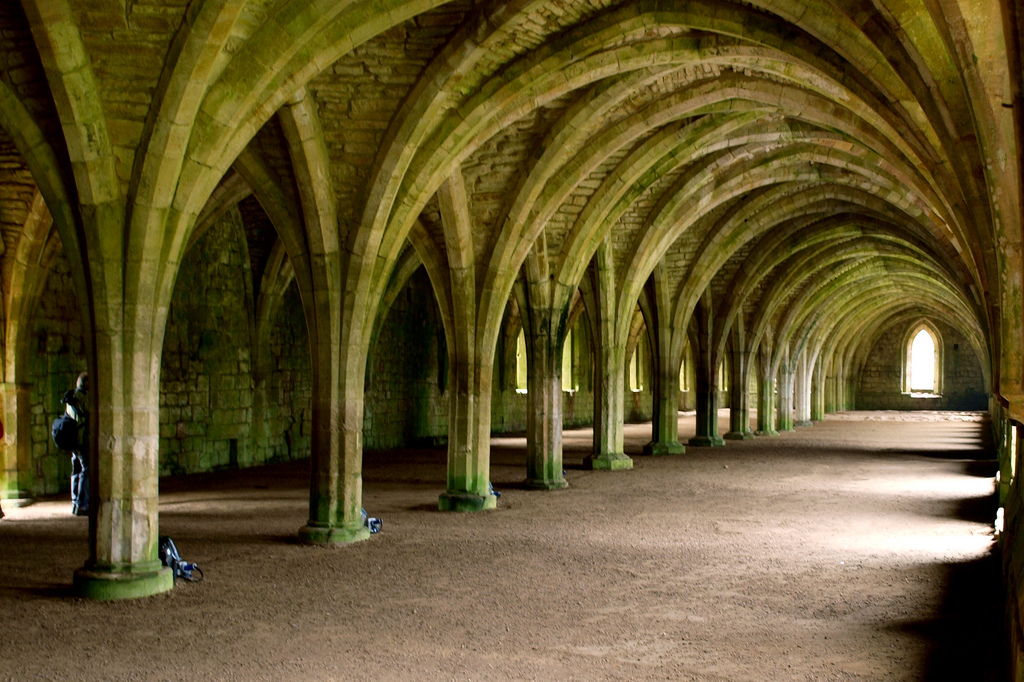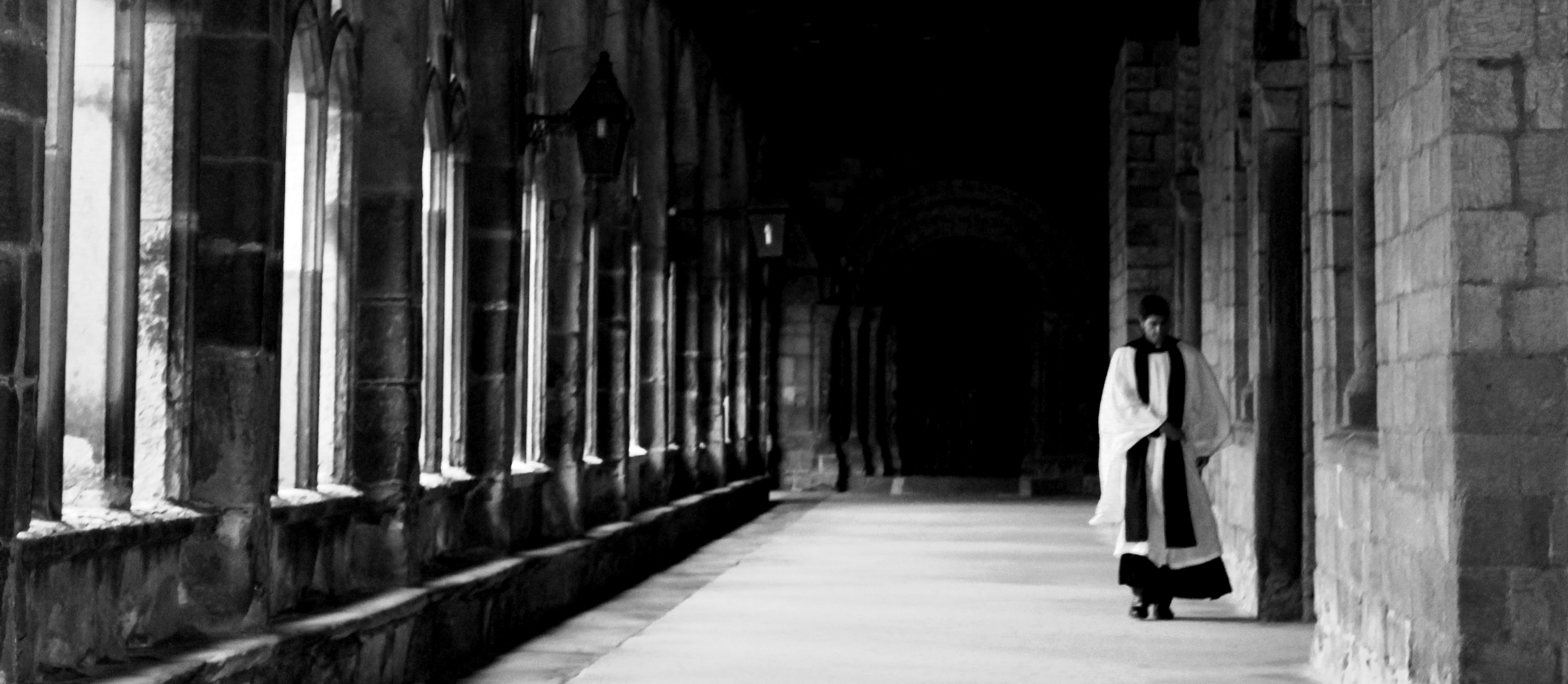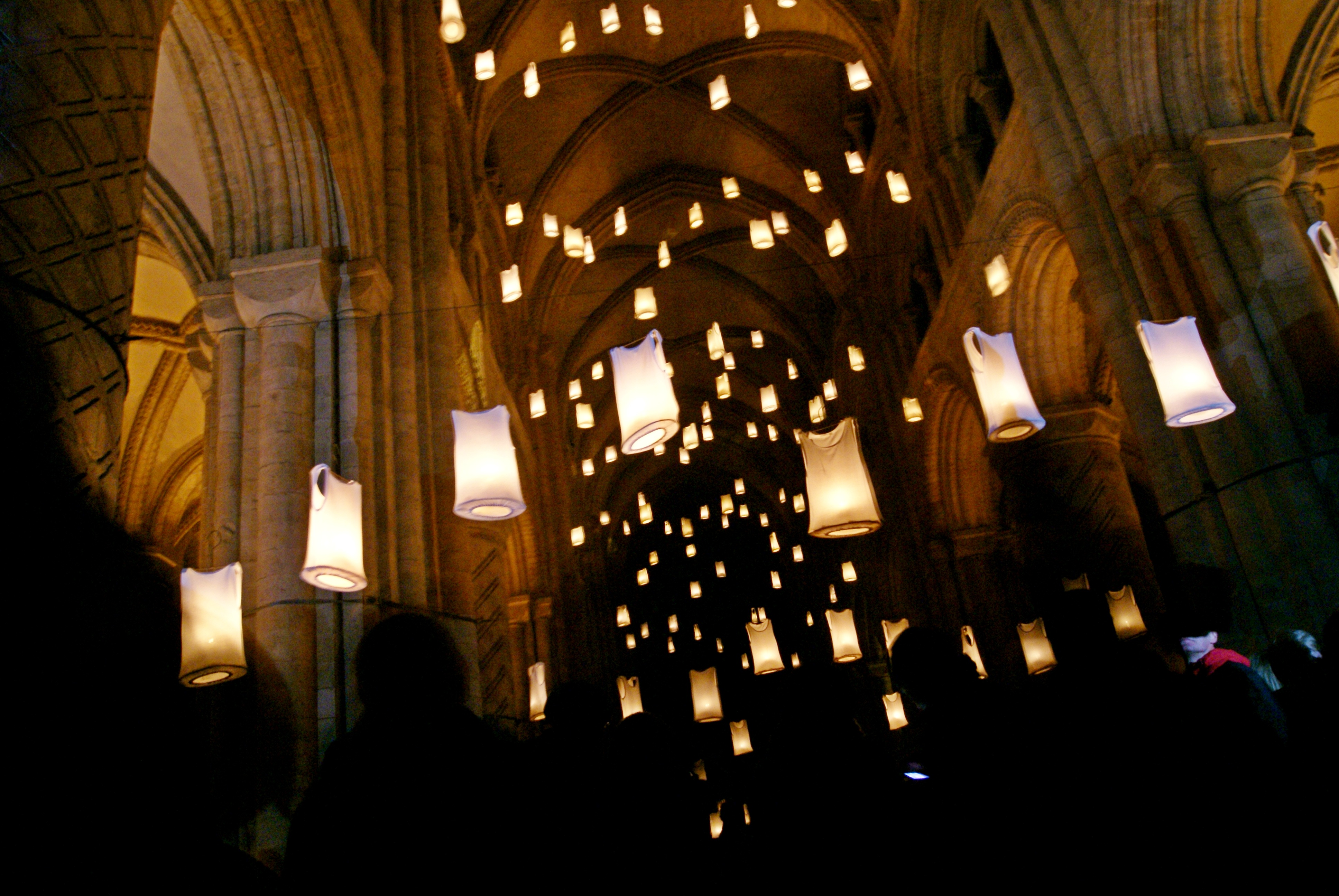Compiled by: Monique Cloe
Throughout the entirety of Western Europe the land is studded with a wide display of monuments from the Roman Empire. Among this period of beautiful architecture came Cistercian monasteries dating back to the Romanesque Period, medieval churches and palaces; fortresses from the rein of Louis XIV in addition to copious hilltop villages and exquisite churches.
The use of ribbed vaulting in arches is a common trait in Cistercian monasteries. Below is an image of the Fountains Abbey in London, England. The use of stone “ribs” to support the ceiling of the nave began with the Durham Cathedral in Durham, England. This was a very large achievement, for it was a brand new idea. Pointed arches overcome the difficulties created by the inflexible geometry of semi-circular arches by allowing arches of different shapes to come to the same height. Ribbed vaulting provides support for the ceiling at its most critical points. They work by transferring the weight downwards, towards the walls.
Ribbed vaulting was extremely significant because it allowed masons to achieve heights that were not able to before. The aspiration of cathedral builders and architects was to build structures that “reflect the glory of God.” Height was the most desirable way to convey this — “to build a cathedral that would soar into the sky, visible from a long way off, was the cathedral builder’s ideal” (Durham World Heritage Site).

Rib Vaulting
by Simon Cocks, used under CC BY

Clergyman Durham Cathedral
by Les Haines, used under CC BY
